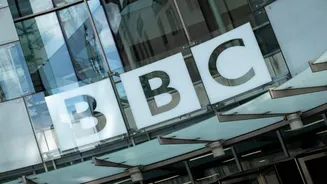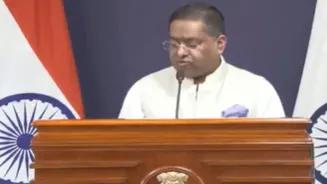Shutdown's Long Run
The US government faced an unprecedented situation as the longest shutdown in history entered its 40th day. This extended period of inactivity was a direct
result of disagreements within the government. The main issue was a deadlock between different parties about federal funding. This extended shutdown caused significant disruptions, impacting various government operations and the lives of many citizens. With the Senate's recent vote, there was a glimmer of hope that this prolonged period of uncertainty might be coming to an end. However, the path to a resolution still required the approval of the House of Representatives, as well as the President's signature, to become law.
Senate's Vote Results
The US Senate took a critical step towards ending the government shutdown by casting votes on a proposed agreement. The details of the agreement reportedly included backing from at least seven Democrats. This support was instrumental in garnering enough votes to potentially pass the measure in the Senate. The outcome of the voting was closely watched, with the future of government funding hanging in the balance. The vote, if successful, paved the way for the bill to move forward. However, it was only the first part of a larger process that would need to unfold before a final resolution could be reached. This progress demonstrated that there was a willingness to work together to overcome the issues that had led to the shutdown.
Deal's Path Forward
If the Senate's vote was successful, the next phase in the process was the bill’s passage in the House of Representatives. Following approval by the House, the bill would then be sent to the President for his signature. The success of the agreement hinged on both the House and the President’s support. The outcome of these subsequent stages would ultimately decide whether the logjam in Congress was truly over. This situation presented a challenge for the government, and the potential outcomes of the votes could be varied. Therefore, the country waited to see how the bill would fare in the remaining processes required for the passage of the bill into law.
Contours of the Deal
Specific details of the agreement that was voted upon in the Senate were crucial to understanding its potential impact. It's important to know what President Trump's position was regarding the government shutdown. These details provided insights into the compromise. The information surrounding the deal provided the public and stakeholders with the data required to comprehend how the government was attempting to tackle the shutdown situation. The key points in the agreement could determine the future of government funding and various programs. This led to expectations of how the shutdown would ultimately be resolved. Discussions of these details are necessary for a comprehensive understanding of the situation.
Democratic Pushback?
Despite the potential for a breakthrough, there were indications that some Democratic leaders in the Senate might oppose the funding plan. This anticipated pushback added a layer of uncertainty to the final outcome. The varying viewpoints of key figures within the Democratic party could influence the process. The dynamics surrounding the opposition underscored the complex political landscape in which the shutdown was resolved. Democratic leaders' stances would be a crucial element in determining whether a consensus could be achieved. If this was not the case, further negotiations would be needed to ensure the funding bill would pass to the House of Representatives.














